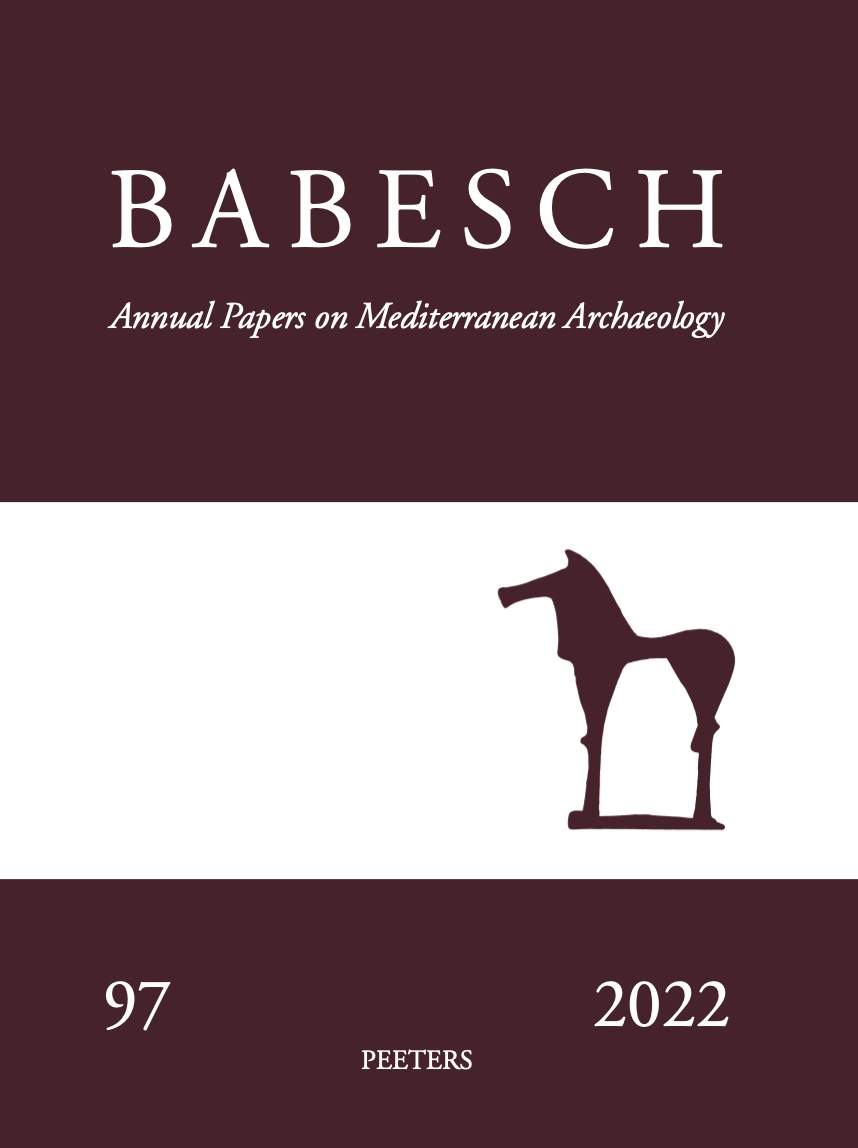 previous article in this issue previous article in this issue | next article in this issue  |

Preview first page |
Document Details : Title: Early Etruscan Stone Sculpture Author(s): LULOF, Patricia S. , KARS, Henk Journal: BABESCH Volume: 69 Date: 1994 Pages: 49-61 DOI: 10.2143/BAB.69.0.2005941 Abstract : In Etruria, stone sculpture is relatively rare, the reason being in part a lack of suitable material (the Carrara quarries were not exploited until the mid first century B.C.). The city of Vulci was an exception, at least in the Archaic period; some 60 pieces are known from this town. Fabulous creatures such as sphinxes, centaurs, winged lions or Meermischwesenwere placed at the entrances of tombs as guardians of the dead. The types of these tombguardians vary greatly, both in style and in chronology. The production of this type of tomb sculpture started around the beginning of the 7th century and continued until the end of the 6th. Around 520 the production ceased without no apparent reason. In the early period the monumental stone sculpture was strongly influenced by the Daedalic style. Small plastic figurines, such as ivories from the East, set examples for the Etruscan sculpture. Later, in the 6th century, especially between 570-530 B.C. the sculptural style changed under the influence from the Greek artists from Ionia. |
|


